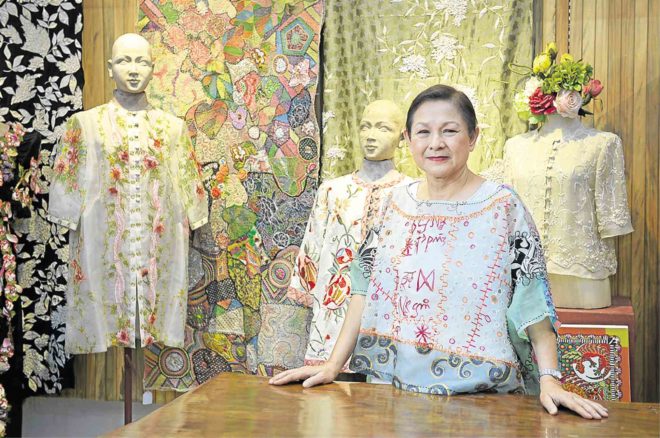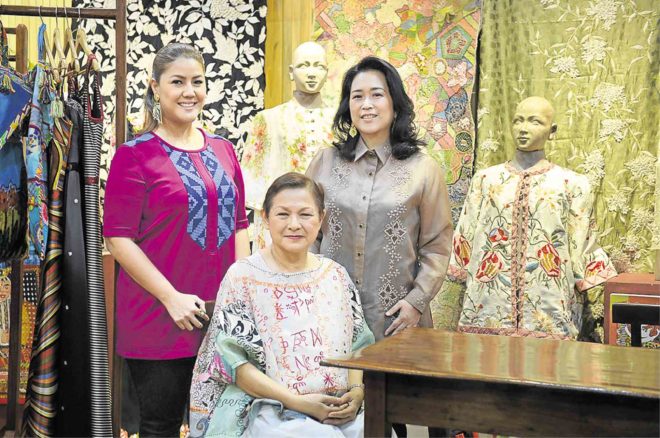
In traditional Filipino fashion, designer Patis Pamintuan-Tesoro, considered the “doyenne of Philippine Fashion,” comes to mind.
“My mother was a dressmaker and I was born in the ’50s. It was part of our Filipino life to be in our national dresses,” Tesoro recalled. “During President Ramos’ time, we put up a foundation and I continued with the revival of the piña and weaving. Now, everyone is doing it, which I think is great, because if not, we may lose the art completely.”
Tesoro’s designs usually revolve around the piña, her favorite material. Tesoro breathes life into the traditional textile by morphing it into everyday wear, like a panuelo could be worn over a basic black dress, or a saya with a shirt.
The barong has prints and colors to make it relevant to younger generations.
Tesoro’s bohemian flair is evident in the playful yet thoughtful mix of patterns, patchwork, embroidery, beadwork, textures and colors.

Astounding collection
Tesoro is known for her astounding personal fabric collection—a thousand materials to date—ethnic textiles, specialty fabrics from her foreign travels, and some customized by her skilled team. “I’ve been collecting fabrics my whole life. It’s a personal passion. I love embroidery—beautiful ones,” she said.
Tesoro also never lets her fabric go to waste. She does “upcycling,” repurposing leftovers as patchwork, appliqués or a whole new fabric. Tesoro’s patchwork fabrics take almost half a year to complete, all made by hand.
It does take a village and time to produce such designs, and Tesoro knows that the weaving and embroidery industry is slowly dying. Skilled embroiderers and weavers rarely pass on the skill to the next generation, many of whom are reluctant to continue the tedious art.
“That is why it is important for designers to continuously innovate, and to give the market something it would like for the industry to survive,” said Tesoro. “It is also important to offer the weavers and embroiderers a price they’ll be willing to work for.”
Boosting tourism
Tesoro’s fabrics and creations will be showcased in an exhibit, “Philippine Clothing and Textile by Patis Tesoro,” on May 17. The historical exhibit is part of “Balik Saya,” a project spearheaded by Manila Fifth District Rep. Cristal Bagatsing, with the Department of Tourism and Intramuros Administration.
It aims to boost tourism in Intramuros and to reintroduce the baro’t saya, especially to the younger generation.
“We wanted to highlight the baro’t saya since that’s where the terno, which is more popular, came from,” said Bagatsing.
“Outside the walled city is poverty,” she added. “I hope this project could shed some light, bridge the gap and help uplift these less fortunate communities through the support of the discerning public.”
Serving as historic backdrop for the exhibit is the newly opened Destileria Limtuaco Museum, owned by the oldest distillery in the Philippines and makers of iconic liquor brands Maria Clara Sangria. Like Tesoro and Bagatsing, Destileria Limtuaco’s thrust is to promote local products and produce through its Philippine Crafts Spirits line. –CONTRIBUTED
“Philippine Clothing and Textile by Patis Tesoro” will be open to the public May 18-26 at the Destileria Limtuaco Museum, 482 San Juan de Letran St., Intramuros, Manila.

